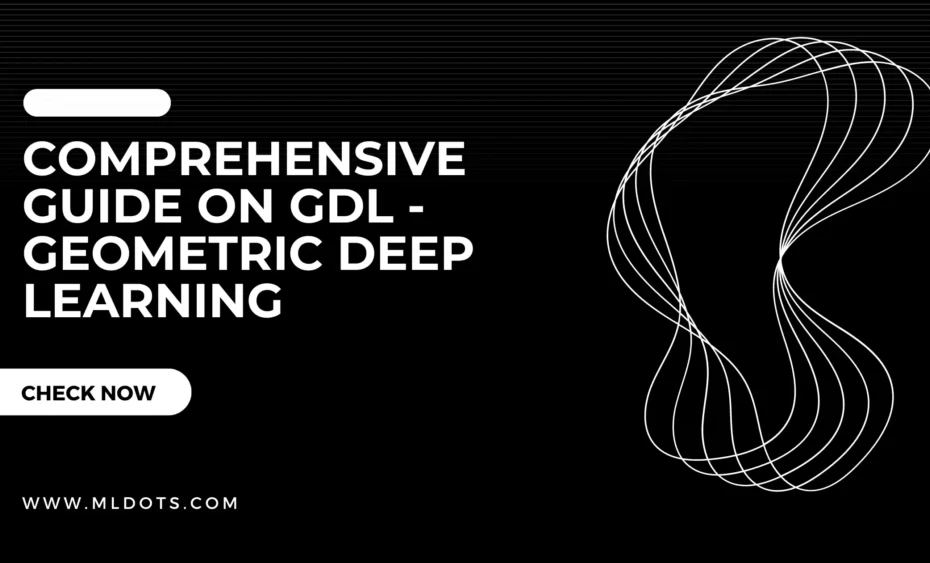A new area of study called geometric deep learning (GDL) combines the strength of deep learning with the geometric structures of data to produce a novel method of data representation. The goal of GDL is to create models that can deal with non-Euclidean data, such as graphs and manifolds. GDL is a subfield of computer vision and machine learning.
GDL has been used in a variety of applications, including:
1.Medical imaging 2.Natural language processing, and 3. image recognition.
An in-depth explanation of Geometric Deep Learning (GDL), including its history, uses, and multiple architectures, will be given in this article. Also, we will go over its benefits and drawbacks and offer instances of GDL implementations that were effective.
Background
A subset of deep learning called geometric deep learning (GDL) makes use of the geometry of data to build more accurate models. GDL is inspired by the notion that data can be characterized as a graph or a manifold, which can be used to represent the underlying structure of the data.
GDL aims to develop better, more accurate models by taking advantage of the geometric structure of the data. For instance, using GDL to exploit the spatial relationships between pixels in a picture can boost the model’s accuracy in image identification tasks.
Application
A variety of tasks, such as image identification, natural language processing, medical imaging, and many more, have been tackled with the help of GDL.
- Image Recognition : Object detection and segmentation are two examples of image recognition tasks for which GDL has been employed. In order to increase the model’s accuracy, GDL can be utilised to take advantage of the spatial relationships between individual pixels in an image. In a number of image identification applications, GDL models have been employed to produce cutting-edge results.
- Natural Language Processing : Natural language processing (NLP) tasks like text classification and sentiment analysis can also be performed using GDL. In order to learn the associations between words, graph-based models can be utilised after representing words as nodes in a graph using GDL. This could facilitate the development of more precise models that comprehend word context more effectively.
- Medical Imaging : Medical imaging procedures including diagnosis and treatment planning have also been impacted by GDL. The accuracy of the model can be increased by using GDL to model the underlying structure of medical images like MRI and CT scans.
Architecture
GDL models can be divided into two main categories: graph-based models and manifold-based models.
Data is represented as a graph using graph-based models, and the relationships between the nodes are then discovered using graph-based models. When the data can be seen as a graph, like in the case of tasks like picture recognition and text classification, graph-based models are frequently employed.
Convolutional neural networks (CNNs) are a sort of graph-based model that are applied to graphs using graph convolutional networks (GCNs). The accuracy of the model can be enhanced by using GCNs to learn the connections between nodes in a graph.
Data is represented as a manifold, which is a higher-dimensional entity, using manifold-based models. For situations like medical imaging, where the data may be seen as a 3D object, manifold-based models can be used.
In order to increase the model’s accuracy, manifold-based models can be utilised to discover the connections between a manifold’s nodes. Diffusion maps and Isomap are two popular manifold learning techniques that are used to learn the structure of manifolds.
Advantage
GDL is superior to conventional deep learning methods in a number of ways.
First, GDL can be utilised to take advantage of the geometric structure of the data, which can assist the model’s correctness. For instance, GDL models can comprehend the context of the data and give more accurate results by taking into consideration the spatial relationships between the pixels in an image.
Second, GDL models can be utilised to develop models that are more effective. GDL models can be trained more quickly and with less data than conventional deep learning models because they take advantage of the data’s underlying structure.
Third, GDL models can be utilised to develop models with improved generalisation to unobserved data. GDL models can more effectively comprehend the context of the data and generate better outcomes when faced with unseen data by taking into account the underlying structure of the data.
Challenges
There are still many issues to be solved in the very young field of GDL research.
Firstly, because GDL models require more sophisticated structures and data than conventional deep learning models, they are frequently computationally expensive. GDL may be challenging to implement in practical applications as a result.
Second, GDL models can be challenging to interpret since they are sometimes more intricate and challenging to comprehend than conventional deep learning models.
Third, because GDL models can be challenging to visualise and analyse, they can be challenging to troubleshoot.
Implementations
Lets see how to build GDL using python
Requirement : PyTorch >= 1.4.0
Check version : !python -c "import torch; print(torch.__version__)"
Install dependencies :
!pip install torch-scatter -f https://pytorch-geometric.com/whl/torch-${TORCH}+${CUDA}.html
!pip install torch-cluster -f https://pytorch-geometric.com/whl/torch-${TORCH}+${CUDA}.html
!pip install torch-scatter -f https://pytorch-geometric.com/whl/torch-${TORCH}+${CUDA}.html
!pip install torch-spline-conv -f https://pytorch-geometric.com/whl/torch-${TORCH}+${CUDA}.html
!pip install torch-sparse -f https://pytorch-geometric.com/whl/torch-${TORCH}+${CUDA}.html
!pip install torch-geometric
#import the libraries
import torch from torch_geometric.data import DataRead more here https://pytorch-geometric.readthedocs.io/en/latest/
We have provided a thorough overview of Geometric Deep Learning (GDL) in this article, including its history, its uses, and the numerous GDL designs. Also, we have covered the benefits, difficulties, and successful GDL implementations.
GDL is a new area of study that has the potential to completely alter how we process and examine data. For a variety of tasks, including image identification, natural language processing, and medical imaging, GDL can be utilized to develop more accurate and efficient models. I will be covering more aspect of GDL in future post at MLDots.
